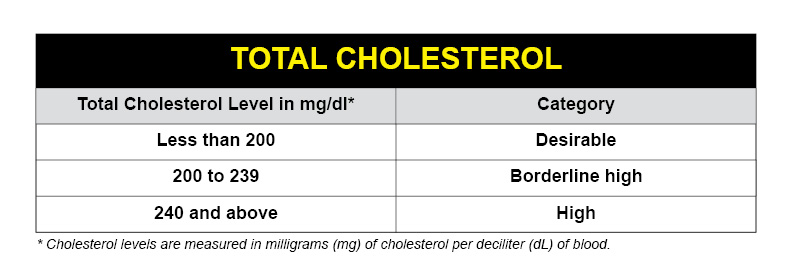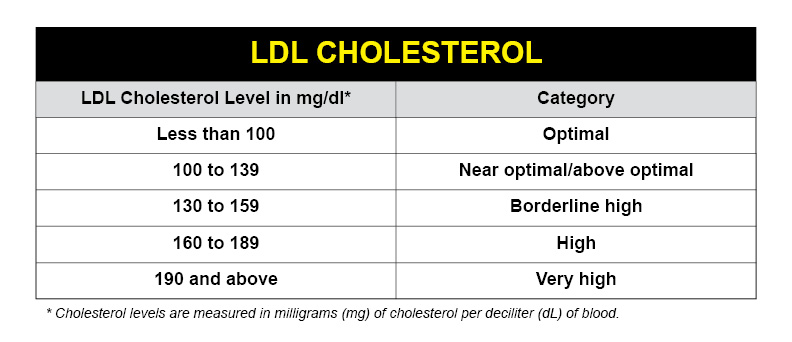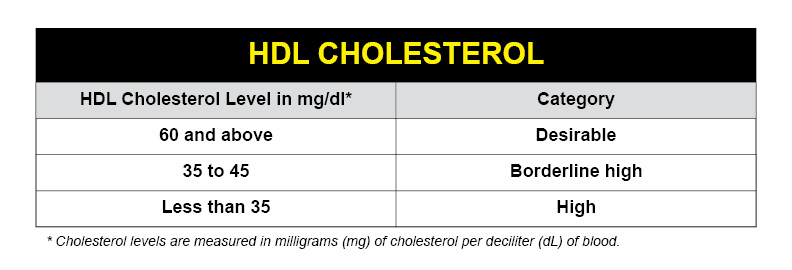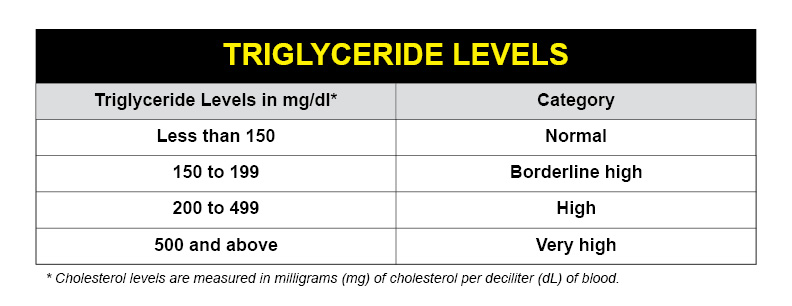Cholesterol Charts: Explaining Your Cholesterol Levels
Cholesterol charts may help you understand your cholesterol levels and make decisions on how you will treat your high cholesterol.
Cholesterol levels, as you likely know, may be linked to our risk of heart attack and stroke—two of the major preventable causes of disability and death in the Western world. If you have an annual medical or regular health check-up, it’s likely that you’ve had your cholesterol levels checked.
In this article, we’ll help you understand what your cholesterol levels meanwhile introducing you to cholesterol charts. (See also What Is Cholesterol?.)
GLOSSARY OF KEY TERMS
- Cholesterol: A type of fat made by the liver.
- Triglycerides: A molecule containing three molecules of fatty acids and one molecule of glycerol (a sugar).
- Lipoproteins: A round structure containing cholesterol and triglycerides on the inside, surrounded by a protein coat on the outside.
- Low-density lipoproteins (LDL): The term “bad cholesterol” refers to LDL that contain high levels of cholesterol, which is deposited into blood vessels.
- High-density lipoproteins (HDL): The term “good cholesterol” refers to HDL that soak up cholesterol from the blood stream.
What Is Cholesterol?
Cholesterol is a type of fat found in the human body. Your body needs some cholesterol for making the structure of cells and manufacturing hormones, bile acids, and vitamin D. When levels in the bloodstream are high, cholesterol deposits may build up in inflamed blood vessels, a process known as atherosclerosis, which leads to coronary artery disease (CAD), stroke, and peripheral vascular disease (PVD).
Cholesterol is packaged up, with triglycerides, into structures called lipoproteins and surrounded by a protein layer and allows it to travel freely in the blood.
Cholesterol Levels and Age
Cholesterol levels tend to rise as we age—a process that begins in early life. Diet in childhood and the teen years will lay a foundation for cholesterol levels and cardiovascular health as the years go by.
Men generally have higher cholesterol levels than women, but in women, cholesterol levels begin to rise during and after the menopause.
Cholesterol Test Results: The Cholesterol Charts
If you’re over the age of 20, you should have a cholesterol test, known as a “lipoprotein profile,” at least every five years. This is a fasting blood test drawn nine to 12 hours after food. It measures total cholesterol, LDL, HDL, and triglycerides.
The National Heart, Lung, and Blood Institute, part of the U.S. government’s National Institutes of Health, provides cholesterol charts to help interpret blood test results.
About Cholesterol Charts
These charts are basic guidelines. Keep in mind that, as mentioned earlier, cholesterol levels vary between men and women and change with age.
Your doctor will assess your results along with your medical history, examinations, and other investigations and advise you on what actions you need to take.
Important considerations that affect your treatment options include the following.
Determining the Risk of Heart Disease
The American Heart Association has a calculator to determine your 10-Year Risk for Coronary Heart Disease using Framingham Point Scores. This scoring system takes into account:
- Your age
- Total cholesterol
- HDL levels
- Blood pressure
- Smoking status
- Diabetes diagnosis
This calculator can be useful, but for a more thorough evaluation, your doctor will consider these factors along with your LDL, weight, and physical activity levels along with your family history of early heart disease (first-degree male relative before the age of 55 or a first-degree female relative before 65). Once all of this information is collected, your physician will decide which risk group you fall into.
Treating High Cholesterol
Treatment options may include the following:
- Stop smoking.
- Eat a heart-healthy diet. See our posts Heart-Healthy Diet Plan: Yes, “Planning” Is Paramount and Cardiac Diet: The Road to Wellness Starts Here.
- Make therapeutic lifestyle changes (TLC). This includes a cholesterol-lowering diet (TLC diet), physical activity, and weight management.
- Consider drug treatment. Your doctor may advise you to take cholesterol-lowering drugs.
- Consider supplements. Omega-3 fatty acids, turmeric, and oregano oil may all lower cholesterol, although the research is conflicting and results may be unpredictable. Red rice yeast, a natural product, is very similar to statins.

Originally published in 2017, this post is regularly updated.






 WHITE COAT SYNDROME
WHITE COAT SYNDROME  News Briefs February 2024
News Briefs February 2024  Savor the Sweet Potato
Savor the Sweet Potato 
Knowing your numbers is important; a group of telling cholesterol charts will follow your blood test.
© Designer491 | Dreamstime